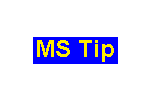- ▶
- Heaters/Source
- ▶
- Agilent Heaters and SensorsMass Spectrometry, Scientific Supplies & ManufacturingScientific Instrument Services 5973 Source Heater Tamper Resistant Allen Wrench 5973/5975 Quad Sensor 5985 Source Heater Assembly Agilent Interface Heater Assembly 5971 Interface Heater

- ▶
- LiteratureApplication Notes Adsorbent Resins Guide Mass Spec Tips SDS Sheets FAQ MS Calibration Compound Spectra Manuals MS Links/Labs/ Organizations MS Online Tools Flyers on Products/Services Scientific Supplies Catalog About Us NextAdvance Bullet Blender® Homogenizer Protocols Micro-Mesh® Literature Instrumentation Literature Agilent GC/MS Literature SIS News / E-Mail Newsletter NIST MS Database - Update Notifications

- ▶
- Mass Spec Tips1 - Freon for use in Mass Spectrometer Leak Checking 2 - Mass Spectrometer Probe Cooling 3 - Sample Vials for Direct Probes 4 - Selection of Vacuum Pump Oils for Lowest Mass Spec Background 5 - Determination Linkages in Biomolecules of Disulfide 6 - Transfer of H.P. ChemStation MS and GC Chromatograms from PC to MAC Computer 7 - Repairing Clogged Thermospray Probes 8 - Tuning a Finnigan 5100 to Meet BFB or DFTPP Criteria 9 - H.P. 5971 Transfer Line Tip for Direct Introduction of Capillary Column 10 - Troubleshooting Finnigan 5100 GC/MS Systems 11 - Leak Checking Mass Spectrometers 12 - Elimination of Memory Peaks and GC Background Noise 13 - SuperIncos Mapped Software Print Buffer Lockup 14 - Reduction of Peak Tailing 15 - Electron Multiplier Sensitivity 16 - INCOS Procedure for Calibrating on the Finnigan 4500 17 - Extending Electron Multiplier Life 18 - What techniques or methods do you use to determine if the electron multiplier 19- What techniques or methods do you use to detect vacuum leaks in your mass spectrometer 20 - Extending Lenear Range of the Mass Spec Article - Improving Sensitivity in the HP 5971 Mass Spectrometer - Part 1 and Part 2

- ▶
- 16 - INCOS Procedure for Calibrating on the Finnigan 4500 (This Page)
 Mass Spec Tips is a collection of tips relating to the operation
and service of mass spectrometers. Some of these Tips have been
reported in our newsletter, "The Mass Spec Source."
If you have a question relating to the operation or service of
mass spectrometers or would like to add your comments to the below
tip and would like to have it included in this forum, please contact us.
Input to this database of MS Tips is needed from our readers
to complete this section.
Mass Spec Tips is a collection of tips relating to the operation
and service of mass spectrometers. Some of these Tips have been
reported in our newsletter, "The Mass Spec Source."
If you have a question relating to the operation or service of
mass spectrometers or would like to add your comments to the below
tip and would like to have it included in this forum, please contact us.
Input to this database of MS Tips is needed from our readers
to complete this section.
by John Delaney
Affiliation: Betz Laboratories
I subscribe to the Mass Spec Source and have found it to contain lots of useful information and timely tips. This tip describes an Incos procedure to use while calibrating that your readers should find valuable.
While tuning and calibrating on a Finnigan 4500 (operating under SuperIncos) it is desirable to maximize the intensity of the FC43 ions, or any other cal gas for that matter, without saturating any of the dominant ions (eg. 69 m/z for FC43). Instead of acquiring a few scans at one EM voltage, checking the ion abundances in LIST, adjusting the EM voltage and re-acquiring, one can obtain a mass spectrum at the correct multiplier setting in this way:
Tune the MS
Set the electron multiplier (EM) to a moderately low value, eg. -1200V
go into ACQuire and type G25;e;KAL
KAL is a macro written in executive:
KAL = map/c (v1000000;d1,25;e)
= chro (i;69;d1,25)
=
While monitoring the MS signal in MAP, increase the EM voltage ca. 100 V every 5 scans until 25 scans are acquired. At the end of the acquisition, the macro automatically displays the data with a mass chromatogram. The point where the 69 m/z peak saturates is easily seen (ticks), and the scan with which to calibrate can be taken from the previous plateau.
Figure 1.

